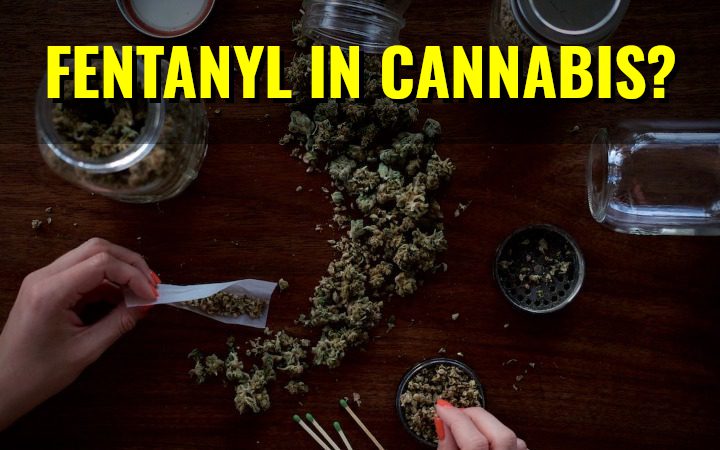This question is most controversial even among advocates and generates a tremendous amount of vitriol wherever it's discussed. Let's have a look at the evidence to settle the issue.

That street cannabis could be laced with fentanyl has widely been labelled a myth that just won’t die. Many advocates have been claiming for years, and keep claiming, that it simply cannot happen for a myriad of reasons, and that anecdotal evidence to the contrary needs to be countered with either reeducation or derision.
I have conducted my own review of the evidence supporting such claims versus the arguments of those rebutting these, and for the reasons that follow, strongly lean toward the former: one can indeed overdose on fentanyl while smoking street cannabis, as unseemly as it may be.
For a while, the evidence was purely anecdotal; many people would come forward after overdosing on fentanyl, claiming they had only smoked a joint. Of course their credibility was immediately questioned. Forbes reported on this in July 2021, calling it “a myth that refuses to go away”.
Mere months later, in November of the same year, the narrative would change, with the first confirmed lab report of a joint laced with, you guessed it, fentanyl. Forbes itself would immediately change its narrative. As more reports of positive lab results surfaced, the consensus started shifting away from the denial of anecdotal evidence.
Reports aren’t limited to joints. For instance, two Idaho dealers have been arrested after dispensing THC wax mixed with fentanyl, leading to a teenager overdosing on the drug. And it’s not just fentanyl contamination either: since this article’s original publication, a report surfaced of cannabis vape juice contaminated with benzodiazepines.
The initial CT Labs results were challenged by government officials upon reexamination, but cannot be dismissed outright. Blaming the scarcity of such results on accidental contamination (which falls purely within the realm of conjecture, by the way) does not make any positive test result go away or drug overdose less real, whereas advancing that some patients had a history of opioid use has nothing to do with sample testing and doesn’t explain the overdoses away.
Furthermore, the rarity of positive test results is easily explained by the rarity of cannabis testing, which makes the paradigm a self-fulfilling argument. For example, Substance Drug Checking’s January 2023 report only lists one cannabis sample. Indeed, users won’t get their joints tested if they’re being told it’s a waste—and they definitely won’t if they die as a result; as for the evidence, it literally goes up in smoke.
Advocates have long argued this is impossible using various arguments pertaining to thermodynamics. It’s been argued, for example, that fentanyl would be unstable at cannabis’ combustion temperatures, a claim I have been unable to verify; in fact, I can’t even find an original source for the claim.
It’s also been argued, on the contrary, that fentanyl’s boiling point (466°C) was too high evaporate at the temperature of a lighter’s open flame, which is at least substantiated. This of course doesn’t mean fentanyl cannot be wafted along with the smoke (which is essentially solid, by the way), so the argument falls short. Furthermore, it is inconsistent with fentanyl-laced methamphetamine (its melting and boiling points being 170°C and 212°C respectively) being as deadly as it is known to be.
Besides, there’s no simple answer to how hot a lighter burns, which makes these claims difficult to corroborate and may account for discrepancies in empirical results.
Other lines of argument have been advanced, like that it makes no economical sense. Some advance that cutting a more expensive drug with fentanyl merely devalues the product—as if it weren’t what cutting is about. This also ignores the simple fact that fentanyl is so addictive that it’s been introduced into every other drug for the clear purpose of getting unwary users hooked. And then fentanyl’s profit margin is most likely way higher than that of cannabis.
The scientific method is all about testing hypotheses against empirical evidence, and in this case theoretical claims fall way short; not only are they contradicted by anecdotal evidence and emerging test results, the underlying arguments didn’t look all that convincing to begin with. This time it feels like it’s the myth that it’s impossible to overdose on fentanyl-laced cannabis that refuses to die, as I keep encountering advocates preaching it as gospel truth, relying on opinions predating the emergence of contradicting evidence.
Effective immediately, I quit all activism and advocacy. This is Rulebreakers' last post. I quit 1 Million Voices For Inclusion,…
I never imagined I would be writing this article. It might actually be my last. Read well before I finally…
I'm still incredulous at how little outrage, or even exposure, Councillor Jeremy Caradonna's appeal for the military to round up…
I've obtained proof via Freedom of Information requests that the City of Victoria took decisions to tackle the homelessness crisis…
Today I held an informal gathering for unhoused residents of Pandora Avenue here in downtown Victoria. Come read how it…
115 protesters gathered at the Legislative Assembly of British Columbia in Victoria, for the sixty-eighth weekend in a row, marching…